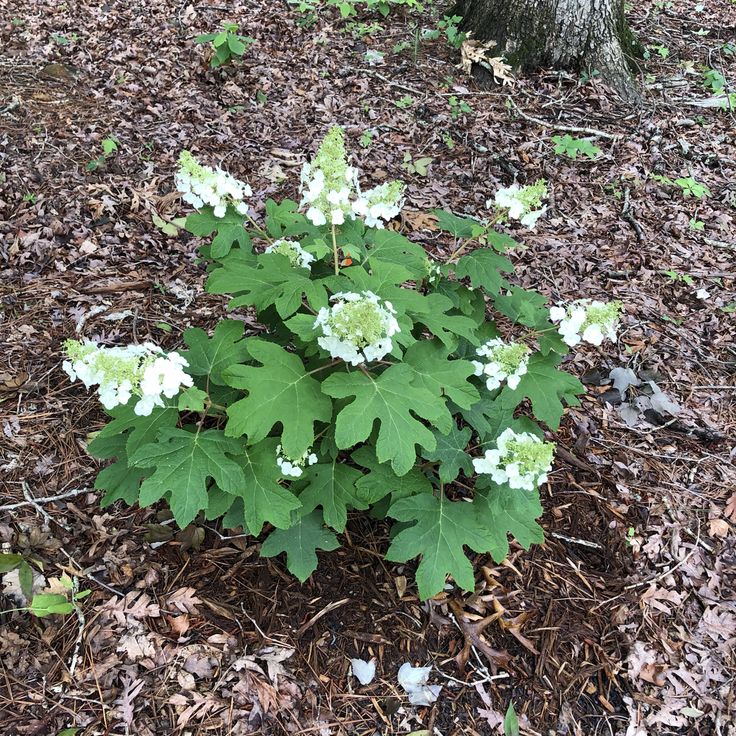
Toxic to dogs, toxic to cats, toxic to horses.Hydrangea quercifolia species is native to the southeastern United States.These leaves arrive first in spring, and after the. Propagate by softwood cuttings in early summer or hardwood cuttings in winter. However, possibly the greatest benefit of oakleaf hydrangeas is that the foliage makes a statement too.Keep an eye out for aphids, capsid bug, glasshouse red spider mite and hydrangea scale.Cone-shaped flower clusters appear from late spring to early summer, with single or multi-petaled white blooms that fade to shades of pink and mauve. Since this hydrangea flowers on previous year's growth, it should be pruned shortly after flowering is complete. Named for the deeply lobed oak-like foliage, this multi-stemmed shrub grows 4-8 feet tall and wide with a compact rounded habit.

Flowers are very attractive in dried arrangements Great candidate for mass plantings, hedges, mixed shrub borders, as a backdrop or accent plant.
#Oak leaf hydrangea full#
Performs best in full sun or part shade in fertile, medium moisture, well-drained soils.Providing a long season of interest, Sike's Dwarf is a great hydrangea for small spaces. The lush foliage of deeply-lobed, oak-shaped, dark green leaves, turns attractive shades of bronze and purple as the nights grow cooler in the fall. long (10 cm), packed with white florets gradually turning pale pink as they mature. Blooming in early to mid summer, this Oakleaf Hydrangea boasts a profusion of large conical panicles, 4 in. Plants can lose significant numbers of flower buds or die to the ground in harsh winters (temperatures below -10 degrees F), thus respectively impairing or destroying the bloom for the coming year.Ideal for small gardens, Hydrangea quercifolia 'Sike's Dwarf' (Oakleaf Hydrangea) is a compact, well-rounded deciduous shrub noted for its showy foliage and cone-shaped flowers. Plants should be given a sheltered location and winter protection (e.g., mulch, burlap wrap) in USDA Zone 5, mainly when not fully established.

Winter damaged stems may be pruned in early spring. Prune if needed immediately after flowering (little pruning is usually required). Thrives in moist soils and appreciates a summer mulch which helps retain soil moisture. They are quickly grown in organically rich, medium moisture, well-drained soils in full sun to shade. The flowers are quite large relative to the plant's compact size and make this plant an excellent choice for smaller gardens. Full panicles of pure white blooms are held upright above the foliage. 'Brenhill' is smaller than other oakleaf hydrangeas but impressively large flowers. Specific epithet is about the leaves that look like Quercus's (oak). Hydrangea's genus comes from hydro, meaning "water," and aggeion, meaning "vessel," about the cup-like capsular fruit. It is noted for producing pyramidal panicles of white flowers in summer on exfoliating branches clad with large, 3-7 lobed, oak-like, dark green leaves. It is native to bluffs, moist woods, ravines, and stream banks from Georgia to Florida to Louisiana.

Plant description: This plant has leathery, deeply lobed, dark green leaves that turn red in autumn. Hydrangea quercifolia, commonly called oakleaf hydrangea, is an upright, broad-rounded, suckering, multi-stemmed, deciduous shrub that grows 4-6' (less frequently to 8') tall. Hydrangea quercifolia (Oak-leaf hydrangea).


 0 kommentar(er)
0 kommentar(er)
